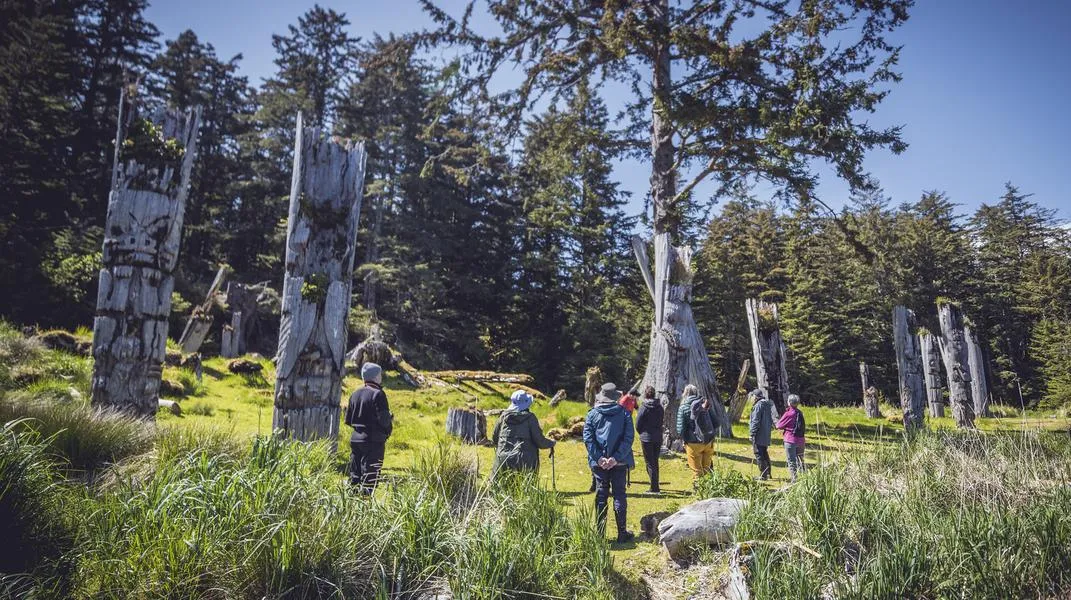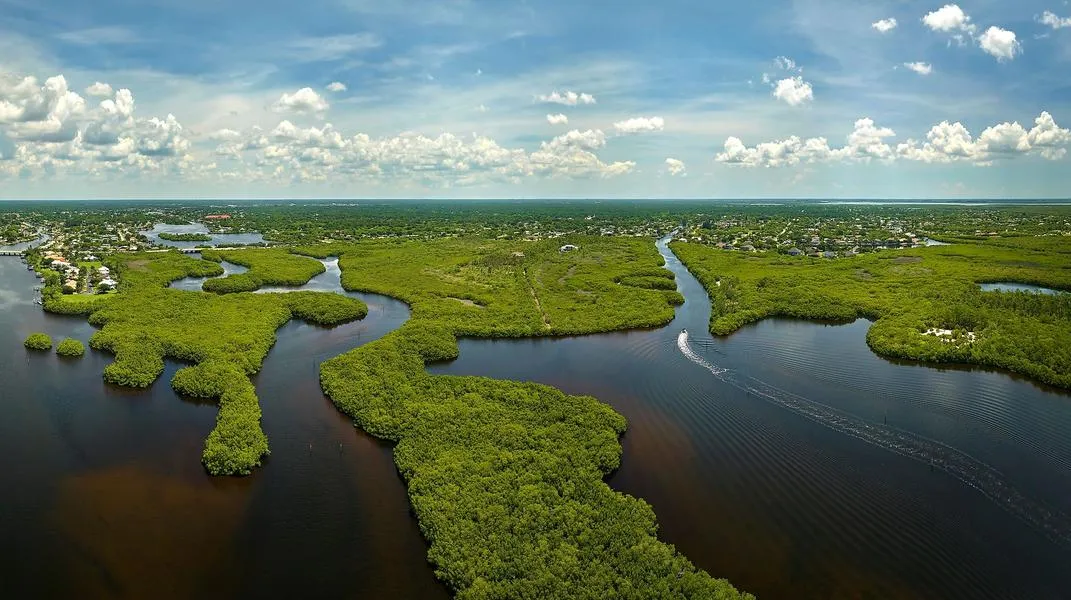Discovering Gwaii Haanas National Park Reserve: A Guide to the Jewel of Haida Gwaii
Nestled off the northern coast of British Columbia, Canada, Gwaii Haanas National Park Reserve is a breathtaking expanse of untouched wilderness, rich cultural heritage, and stunning biodiversity. Comprising over 5,000 square kilometers of land and sea, this remarkable area is a haven for adventurers, nature lovers, and those seeking a deeper understanding of indigenous culture. In this article, we’ll explore what makes Gwaii Haanas an extraordinary destination, the various activities it offers, and the essential materials you need to prepare for a visit.

A Brief History
Gwaii Haanas translates to "Islands of Beauty" in the Haida language, and the park is indeed a natural marvel. The area is of immense cultural significance to the Haida Nation, who have inhabited these islands for over 13,000 years. The park was established in 1993 as a cooperative management area between the Haida Nation and Parks Canada, reflecting a commitment to preserving the natural environment and honoring the Haida culture.
Visitors to Gwaii Haanas can witness the remnants of ancient Haida villages, characterized by their intricately carved totem poles and longhouses. The park is not merely a recreational area; it is an active cultural landscape where the Haida people continue to practice their traditions, making it a living testament to their resilience and connection to the land.
The Natural Beauty of Gwaii Haanas
Diverse Ecosystems
Gwaii Haanas is home to a diverse array of ecosystems, from lush coastal rainforests to rugged shorelines and rich marine habitats. The park encompasses over 200 islands, each with its own unique landscape and wildlife. Visitors can explore temperate rainforests filled with towering cedar and spruce trees, vibrant mosses, and a plethora of plant species. The coastal areas are characterized by dramatic cliffs, sandy beaches, and tidal pools teeming with marine life.
Wildlife
Gwaii Haanas is a sanctuary for wildlife, offering opportunities to see an impressive range of species. Birdwatchers will delight in spotting puffins, eagles, and various seabirds that nest along the cliffs. The waters surrounding the islands are rich in marine life, including sea lions, otters, and a variety of fish species. During the summer months, visitors may even catch a glimpse of humpback and killer whales as they migrate through the region.
Hiking and Exploration
One of the best ways to experience the beauty of Gwaii Haanas is through its extensive network of hiking trails. The park offers numerous routes that wind through the forest, along the coast, and past historic sites. The trails vary in difficulty, catering to both casual walkers and seasoned hikers. The Coastal Trail, for example, provides stunning views of the ocean and the chance to explore ancient Haida sites, while the more challenging trails lead to remote areas that offer solitude and unparalleled natural beauty.
Cultural Significance
Haida Heritage
Visitors to Gwaii Haanas have the unique opportunity to engage with the Haida culture. The park is dotted with ancient Haida villages, including Skedans (K’uuna Llnagaay) and Ninstints (S’Gang Gwaay), where totem poles and other artifacts tell the story of the Haida people. Guided tours led by Haida interpreters provide insights into the cultural significance of these sites, as well as the ongoing efforts to revitalize the Haida language and traditions.
Traditional Practices
The Haida Nation continues to practice traditional fishing, hunting, and gathering in Gwaii Haanas, maintaining a deep connection to their ancestral lands. Visitors are encouraged to respect these practices and learn about sustainable living from the Haida perspective. The park also offers opportunities to participate in workshops and cultural events, providing a deeper understanding of Haida art, storytelling, and spiritual beliefs.
Activities in Gwaii Haanas
Gwaii Haanas offers an array of activities for visitors, ensuring that everyone can find something to enjoy amidst its natural splendor.
Kayaking
Exploring the park by kayak is a popular activity that allows visitors to experience the stunning coastline up close. Paddling through calm waters, you can observe marine life and access secluded beaches and coves. Guided kayaking tours are available for those who prefer to have an experienced guide, while more adventurous paddlers can rent kayaks and explore independently.
Wildlife Watching
Whether you’re on land or at sea, wildlife watching is a rewarding experience in Gwaii Haanas. Whale watching tours provide an exciting opportunity to spot these magnificent creatures in their natural habitat. Birdwatching is also a highlight, with various species nesting along the cliffs and shores. Visitors should bring binoculars and cameras to capture the incredible sights.
Camping
For those looking to immerse themselves fully in the Gwaii Haanas experience, camping is a fantastic option. There are several designated campgrounds throughout the park, allowing visitors to spend the night surrounded by nature. Camping permits are required, and it’s essential to follow Leave No Trace principles to protect the pristine environment.
Guided Tours
Several tour operators offer guided experiences in Gwaii Haanas, providing insights into both the natural and cultural aspects of the park. These tours may include hiking, kayaking, and cultural experiences led by knowledgeable guides. Engaging with local experts is an excellent way to deepen your understanding of the area and its significance.
Preparing for Your Visit
To ensure a safe and enjoyable experience in Gwaii Haanas National Park Reserve, it’s crucial to prepare adequately. Here are some essential materials and tips to consider before your visit:
1. Clothing
The weather in Gwaii Haanas can be unpredictable, so dressing in layers is advisable. Essential clothing items include:
- Waterproof Jacket: A high-quality, breathable rain jacket is crucial to staying dry during unexpected rain showers.
- Warm Layers: Fleece or wool sweaters and thermal base layers will help keep you warm, especially in cooler temperatures.
- Comfortable Hiking Boots: Sturdy, waterproof hiking boots are essential for navigating the park's trails.
- Hat and Gloves: Bring a warm hat and gloves for cooler weather, particularly if you're visiting during the shoulder seasons.
2. Camping Gear
If you plan to camp, ensure you have the following:
- Tent: A reliable, waterproof tent that can withstand potential wind and rain.
- Sleeping Bag: A sleeping bag rated for the temperatures you might encounter.
- Cooking Equipment: A portable stove, cookware, and utensils for meal preparation.
- Food and Water: Bring sufficient food for your stay and a reliable water purification system or tablets, as potable water sources may be limited.
3. Navigation Tools
While many trails are well-marked, it’s wise to have navigation tools on hand:
- Map and Compass: A detailed map of Gwaii Haanas and a compass will help you navigate the park effectively.
- GPS Device: Consider bringing a GPS device or smartphone with offline maps, but be aware that cell reception can be limited.
4. Safety and First Aid
Safety should always be a priority:
- First Aid Kit: Pack a basic first aid kit with essentials such as band-aids, antiseptic wipes, pain relievers, and any personal medications.
- Emergency Supplies: A whistle, flashlight, and multi-tool can be invaluable in case of emergencies.
5. Wildlife Safety
When exploring Gwaii Haanas, it’s essential to respect the local wildlife:
- Bear Spray: Given the presence of bears in the region, carrying bear spray is recommended.
- Food Storage: Store food securely to avoid attracting wildlife to your campsite.
6. Respect for Indigenous Culture
As you explore Gwaii Haanas, it's essential to approach the area with respect for its cultural significance:
- Follow Guidelines: Adhere to park guidelines and regulations, especially in relation to cultural sites.
- Engage Responsibly: If participating in guided tours, be open to learning and engaging with Haida culture in a respectful manner.
Conclusion
Gwaii Haanas National Park Reserve is a remarkable destination that offers a unique blend of natural beauty and cultural heritage. From its diverse ecosystems and abundant wildlife to its rich Haida history, the park is a place where visitors can connect with nature and gain a deeper understanding of indigenous culture. With proper preparation and respect for the environment and its inhabitants, your adventure in Gwaii Haanas will be a memorable experience that lingers long after your visit. Whether you’re hiking through ancient forests, kayaking along the coastline, or learning from Haida guides, every moment spent in this breathtaking park is a testament to the beauty and resilience of nature and culture.




